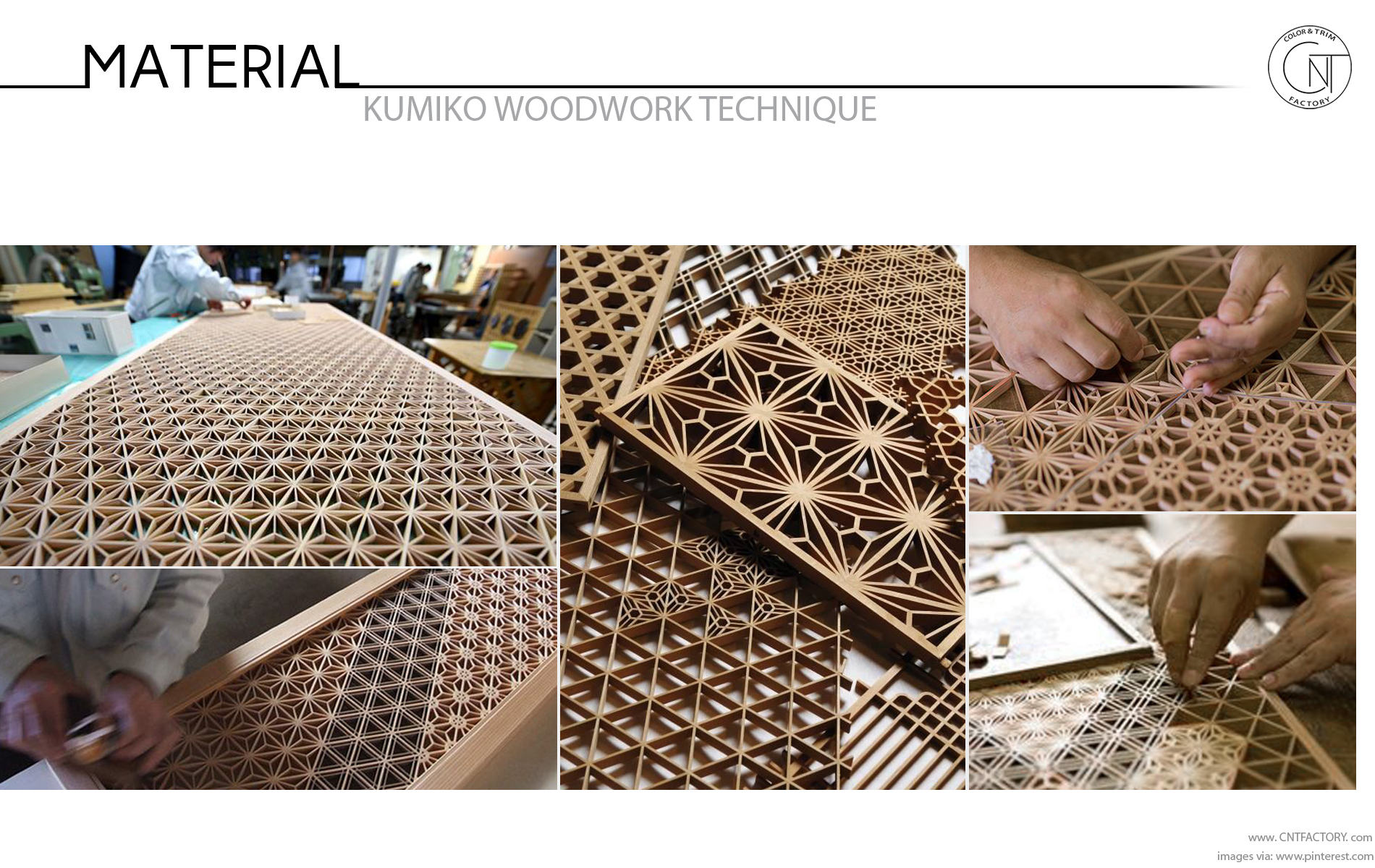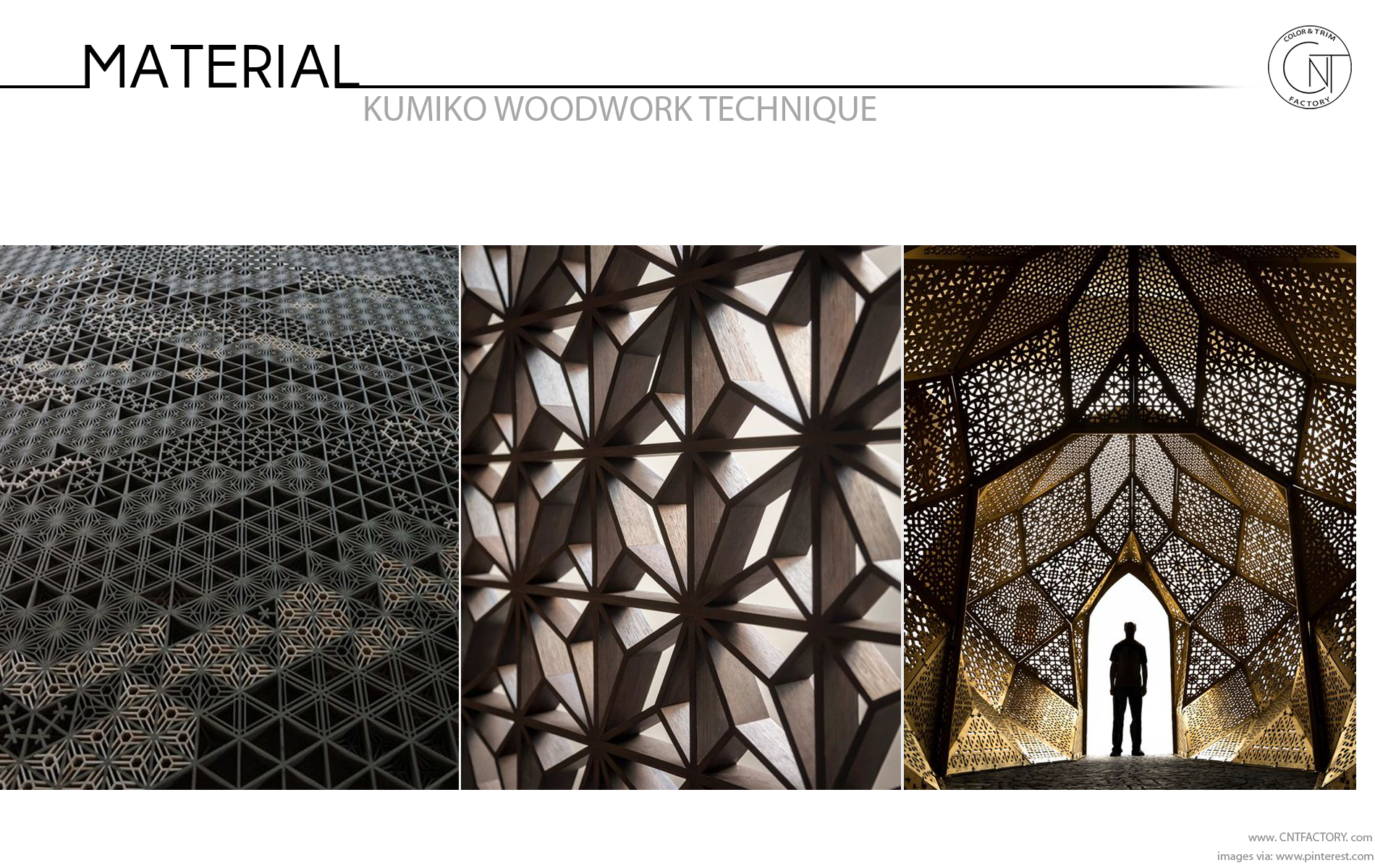Kumiko Woodwork Technique is a delicate art of assembling wooden pieces without nails.
Thinly slit wooden pieces are grooved, punched and mortised, and then are assembled and joined one by one with plane, saw, chisel and other tools while fine adjustments are made. The “Kumiko” woodwork technique was developed in Japan in the Asuka Era (600-700 AD) and has since been refined and passed down through generations of craftsmen.
The work of assembling pieces with incremental measurements of 0.1mm is performed with careful attention. The frame joints are cut, their edges chamfered and their lengths are adjusted. Each process requires skill and experience. The wood has its own characteristics and the thinner it becomes, the harder it is to work with. Knowledge and experience are required to make the right selections of wood and to process it properly.
“Kumiko” designs are roughly divided into 2 types. One is the Hishi Kumiko (diamond shape) and the other is Koshi Kumiko (lattice) with the combination of horizontal and vertical lines. Using these basic designs, grids are fit into the frames. There are over several hundred “Kumiko” design variations. The first step is to choose the right tools and knives for the design, which only experienced craftsmen can do.
Related Post: Flexible Wood / Wickerwork






